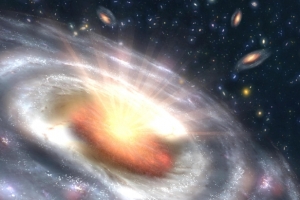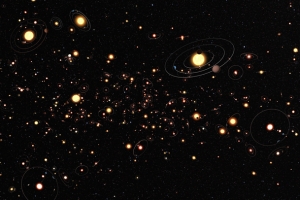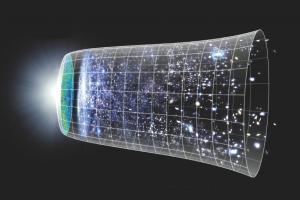[fototag id=”insideablackhole”]
The heart of a black hole is its singularity, a single point in space containing all the matter that originally formed the black hole, as well as anything that fell in after it formed. Like a star, the black hole has mass equal to the combined mass of all this material, but it has nearly no size in the sense of volume. In other words, it would be impossible to measure the diameter of a black hole. Instead, the mass is compressed into an infinitely dense point. At this point, the normal laws of physics we know and love don’t apply.
As you get closer to this point, the pull of gravity increases, in the same way the Sun’s gravitational pull increases as you approach it. As the pull of gravity increases, the necessary speed of movement to counteract it, called the escape velocity, increases too. At a certain proximity to the singularity, the escape velocity exceeds the speed of light (300,000 kilometres per second/186,000 miles per second), the maximum speed anything can travel. In other words, beyond this point, called the event horizon, it’s absolutely impossible to escape being swallowed into the singularity. The distance between the event horizon and the singularity, named the ‘Schwarzschild radius’, depends on the mass of the black hole. The more massive the singularity is, the further out its event horizon is.
When a black hole is active, it’s surrounded by an accretion disk. As gases and other matter orbiting the black hole get closer to the event horizon, the intense gravitational pull of the black hole accelerates them, generating intense friction. The friction heats the gases, causing them to release electromagnetic energy, such as X-rays or visible light.
Along with accretion disks, scientists have observed bright jets propelling matter away from black holes. The leading explanation for these powerful jets is that the rotational movement of the accretion disk generates a strong magnetic field. This magnetic field, in turn, carries matter away from the accretion disk at the speed of light. This steady syphoning of matter reduces the angular momentum of the matter in the accretion disk, causing it to fall into the black hole.







